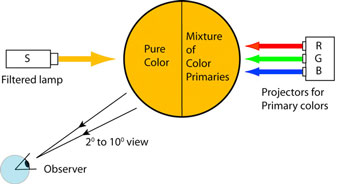 |
| Yosuke Yamane: Division President, Imagine Network Business Division |
Yosuke Yamane, the Director of Panasonic’s imaging business visited DPReview on a recent trip to the United States. He spoke to us about the GH5, the promise of 8K, reports of downsizing and why we haven’t seen on-sensor phase detection in one of the company’s cameras.
Initial response to the GH5
Given it’s the company’s latest product and that Yamane arrived after visiting the video-focused NAB Show in Las Vegas, we started off asking about the GH5.
Early response has been positive, he says, pointing out that it immediately topped the sales chart at one of the US’s largest dealers. ‘The sales were more than we’d originally planned for,’ he says: ‘It depends on the region: some regions sold three times more than we planned and others it was one-point-five times. We’re very satisfied with the result.’
‘Based on our survey, the first customers are mainly videographers,’ he says. But he expects this mix to change: ‘The GH5 provides the best still picture as well as the best moving picture quality ever in any Lumix, so we expect hybrid photographers and videographers to be 50:50.’
‘For video users, the specifications of the video are very important whereas the stills photographers tend to want to evaluate the image quality, based on pictures taken with the camera. In that sense, more and more photographers will come to the GH5. That’s what we expect.’
Who is buying the GH5?
 |
We pressed Yamane on whether he thought the GH5 was selling beyond existing GH4 owners. ‘We don’t have any specific numbers,’ he says: ‘but my gut feeling is that many GH4 users are upgrading to the GH5, this is a decent portion of our first buyers. But, beside GH4 users, maybe it’ll be Canon EOS 5D III and IV users, or Alpha 7S Mark II users. Especially, my feeling was that EOS 5D Mark III users are very much interested in GH5.’
‘The majority of GH5 sales have been body only: that means lots of GH4 users are buying GH5. But also, at the introduction of the Sony a7S, it took share from the Canon EOS 5D Mark II because of the size. I think the same tendency is happening here: Canon EOS 5D Mark III customers are coming to the GH5 because of the compact size and the quality.’
‘The professional camcorder users coming to the GH5 because of the 4:2:2 10-bit video. 4:2:2 10-bit capable cameras are usually very expensive. It’s a feature mainly incorporated in cameras costing over $ 10,000 but we realized these functions for the GH5, so it can easily become part of their workflow at a very affordable price.’
Stumbling over Log?
On the topic of high-end video users buying the camera, we asked about the popularity of the paid upgrade to add V-Log. ‘We started selling V-Log as an upgrade with the GH4,’ explains Yamane: ‘We don’t know the exact attachment ratio but I know we sold more V-Log packages than we expected. When it comes to the GH5, because the stills side is improved, we don’t know if the attachment rate will be higher or not.’
Yamane was very open about the reasoning behind selling the V-Log feature as a paid upgrade: ‘If we incorporated it into the camera, we would have to charge a higher price for the GH5. As of now we believe it’s appropriate to offer V-Log as an option.’
‘It’s not a cost issue, it’s that Log is recognized as having a certain value in the market. If we want to add that value into this camera, we need to keep the value of Log video to the industry.’
Improvements to be made
With the GH5, Panasonic took the unusual decision to launch the camera with the promise of more features that would come after a few months. Yamane confirmed that the delay to introducing 4:2:2 All-Intra recording was simply because it wasn’t ready in time for the planned launch, though it’s noticeable that the V60 cards guaranteed to support its 400mbps write speed aren’t widely available yet. However, he confirms the engineering team is working on more than just delivering the promised features: there will be an update to improve movie autofocus.
‘The most important part of video autofocus is not just speed but also the smoothness. We need to find a concession point for the smoothness of autofocus and the speed of autofocus. First we realized fast AF on the stills side using depth-from-defocus (DFD). Now we are brushing up the smoothness of the DFD for the video category. We are working on it right now. We still don’t know when we can announce it but there will be firmware.’
Why not adopt the phase detection approach used by many of its rivals, we asked. ‘On-sensor phase detection doesn’t work any darker than F8, [which can be a problem in video]. It’s not necessarily true that phase detection is better than DFD plus contrast detection.’
‘We are also aware of other brands’ excellent [phase detection-based] autofocus: we really respect the quality of their sensors and their technology. But if we wanted to do the same; to make our own sensors [using a comparable technology], we’d have to apply those sensors to all of our cameras. The development costs for this kind of sensor would be huge.’
‘Our DFD system is not dependent on a specific sensor, so from the viewpoint of expandability, we should probably go with DFD technology.’
‘But,’ he says: ‘we think our DFD is going to be better than [the best phase-based AF]. That’s our target and we want to realize that accurate autofocus.’
Engine of change
This bold claim is likely to stem from Yamane’s confidence in the GH5’s underlying hardware. This was the most difficult aspect to develop, he says. ‘Really at the core of the camera is its performance, which comes from the LSI’s development: the new processing engine. I truly believe this is the most special engine in the entire industry. This is not only for DSC but also for consumer and professional camcorders.’
He gave examples of all the things that are asked of the processor: ‘4:2:2 10-bit codec is 64x as much data as before. 4:2:0 8-bit at 60p. Also the DFD system’s speed, Dual IS stabilization, the best image quality for Lumix all need to be calculated in a very short time.’
The challenge extended beyond simply making a powerful processor, he says: the chip has to be efficient so that it allows good battery life and doesn’t generate excessive heat. ‘The heating issue was very tough to overcome. How to make the most efficient engine and how to dissipate heat was the most difficult part of the product development.’
Lenses for a hybrid camera
 |
| The Leica DG Vario-Elmarit 12-60mm / F2.8-4.0 ASPH. / POWER O.I.S. is the first in a range of F2.8-4.0 zooms for the Micro Four Thirds system |
Moving on from the GH5, we expressed our surprise that the company would introduce a range of variable aperture zooms alongside such a capable video camera.
‘We are not just targeting GH5 customers,’ he explains: ‘we’re targeting all the other Micro Four Thirds cameras users. We’ve also taken other cameras’ sizing into account, and it also fits on the G85 and the GX85 and some other Micro Four Thirds cameras.’
‘The benefit of Micro Four Thirds style is that it can be smaller and lighter. If we made constant aperture F2.8 lenses, they’d be more expensive and bigger. Considering the benefit we can provide stills photographers we decided to go with F2.8-4 and give rather smaller lenses at reasonable prices.’
The lenses include stepless apertures, to minimize any impact on video while zooming, and, he suggests, for anyone concerned about changes in exposure while video shooting, there are workarounds: ‘Videographers can use them as a constant F4: I think we can also give videographers a solution in that way. I agree that in the future we need to offer lenses that best suit videographers but this camera is targeting hybrid users, both videographers and stills shooters, so we decided with this direction for the next three or four lenses.’
Ambitions and focus
It’s unusual for camera makers to talk much about the future, but during our discussion, Yamane set out some pretty bullish ambitions. ‘For Lumix, the United States is a very strategic market. Our target is to double the business volume by 2020.’
We asked him how this would be achieved. ‘The current business in the United States is 30% mirrorless and 70% compact camera,’ he says: ‘though nearer to 50:50 if you count interchangeable lenses as well.’
‘For the future, to double the business, we’re going to focus on high end product: mirrorless cameras and high-end compacts. We expect a decent increase of the compact market to be sustainable.’
In addition to this, he says: ‘We’re also going to strengthen our product for the high-end video market.’
But, initially at least, this is going to be through cameras like the GH5: ‘firstly we’ll focus on the hybrid form factor. Also help photographers interested in making additional income from providing video. I think this camera will help this kind of photographer.’
In terms of compacts, we’ll focus on the ZS (TZ) series, such as the ZS100. Then the LX series, we’d like to strengthen. In this category the Sony RX100 series is very important, we have to directly compete with that. Our strength comes from ZS series. We’ll focus on that strength and FZ series long zoom.’
One camera he didn’t mention was the LX100, which we know to have an avid following. Should we expect a successor, we asked. ‘As I said, RX100 competes directly with LX10 but LX100 is one step higher. So as the customer expects LX200 we will also strengthen the successor of LX100. How will we answer to the passionate customers of the LX100? We will study how we’re going to answer these customers.’
Trickle-down of technology?
 |
| Yamane (center) was accompanied on his visit by Terry Takabayashi (left), General Manager, Merchandising Department and Kazuki Sugahara (right), Manager, Americas Section, Imaging Marketing Group. |
One method for refreshing models might be through the trickle-down of technology, Yamane suggested: ‘After we introduced the GH4, which was the world’s first 4K mirrorless camera, this 4K technology has been applied in models like G7, G8 and LX100. For the development roadmap, the new technology will first appear in the flagship and then, looking at price and value for money, we will expand the range.’
The rationale is pretty straightforward, he says: ‘R&D development of technology requires a lot of investment. So to amortize that investment we have to apply that technology to other models to expand the volume and realize a return on our investment. After we get a return on that investment we have to reinvest that return in new technology: we have to continue that kind of cycle to evolve our product.’
This means using the GH5 technology more widely, without under-selling it, he says: ‘With GH5 also we would like to expand the technology to other models, looking at striking a balance between offering good value for money and at the price zone at which a customer can expect that technology.’
All of this comes back to a phrase that recurred throughout our talk: the use of features such as 4K and 6K Photo modes to ‘create a new photo culture.’
Nikkei, restructuring and gossip
This all sounds very ambitious for a company reported to be considering scaling back its camera business. Yamane says customers shouldn’t worry too much about what the Nikkei, which published the story, said.
‘That article was more like gossip, saying the business may be moving towards the smaller side in the restructuring,’ he says, before explaining what’s happened.
‘Panasonic has four companies. The camera division used to be in the AVC Networks business but, as of the first of April, we moved Digital Camera and Camcorders to the Appliances company.’
Moving cameras and camcorders away from the pro video division and into the same company as refrigerators may seem odd, but Yamane explains the logic: ‘The Appliances business is much more consumer focused than the AVC group, which has a significant business-to-business component.’
‘The move will bring our marketing, manufacturing and R&D departments together in one place, so we gain better integration [by moving]. We’ll still co-ordinate across with the AVC business on advanced technologies but [the restructuring] means our R&D and marketing efforts are together.’
The coming of the 8K era
Along with its ambitious targets for US sales, Yamane says the company has ambitious targets for hardware, too. ‘Towards the year 2020, 4K will evolve to 8K. Panasonic has supported the Olympic Games for a long time and in 2020, when the games are in Tokyo, the era of 8K will start, [and] we will develop the hardware to develop the 8K picture.’
This doesn’t necessarily mean 8K video, though: ‘As far as for the customer category, we don’t know if we will be able to record all of the output from 8K video. So the question is how we utilize 8K information and create a new photographic culture’
‘8K Photo will completely change the photo shooting style with 33MP resolution. Whether that’s a 4K crop from 8K or 2K cropping from 8K or it’s 33MP images on the stills side.’
But Yamane makes clear that he’s not just interested in the technology: he’s interested in its photographic benefits to users: ‘Based on the customer voice and the customer opinion, we will make the maximum effort to develop strong products to answer the needs of the customers.’
A team effort
Yamane is immediately clear about what’s going to enable the company to achieve these ambitions: when asked what he was most proud of, he was quick to give credit. ‘The engineers who make the product: my team. As the director of the imaging group I’m really proud of the engineering groups that made this camera available to the market. I am proud of every single feature and I respect the engineers who made each function. As long as those talented and reliable engineers are with me, I believe we can make even more innovative products.’
Articles: Digital Photography Review (dpreview.com)



























You must be logged in to post a comment.